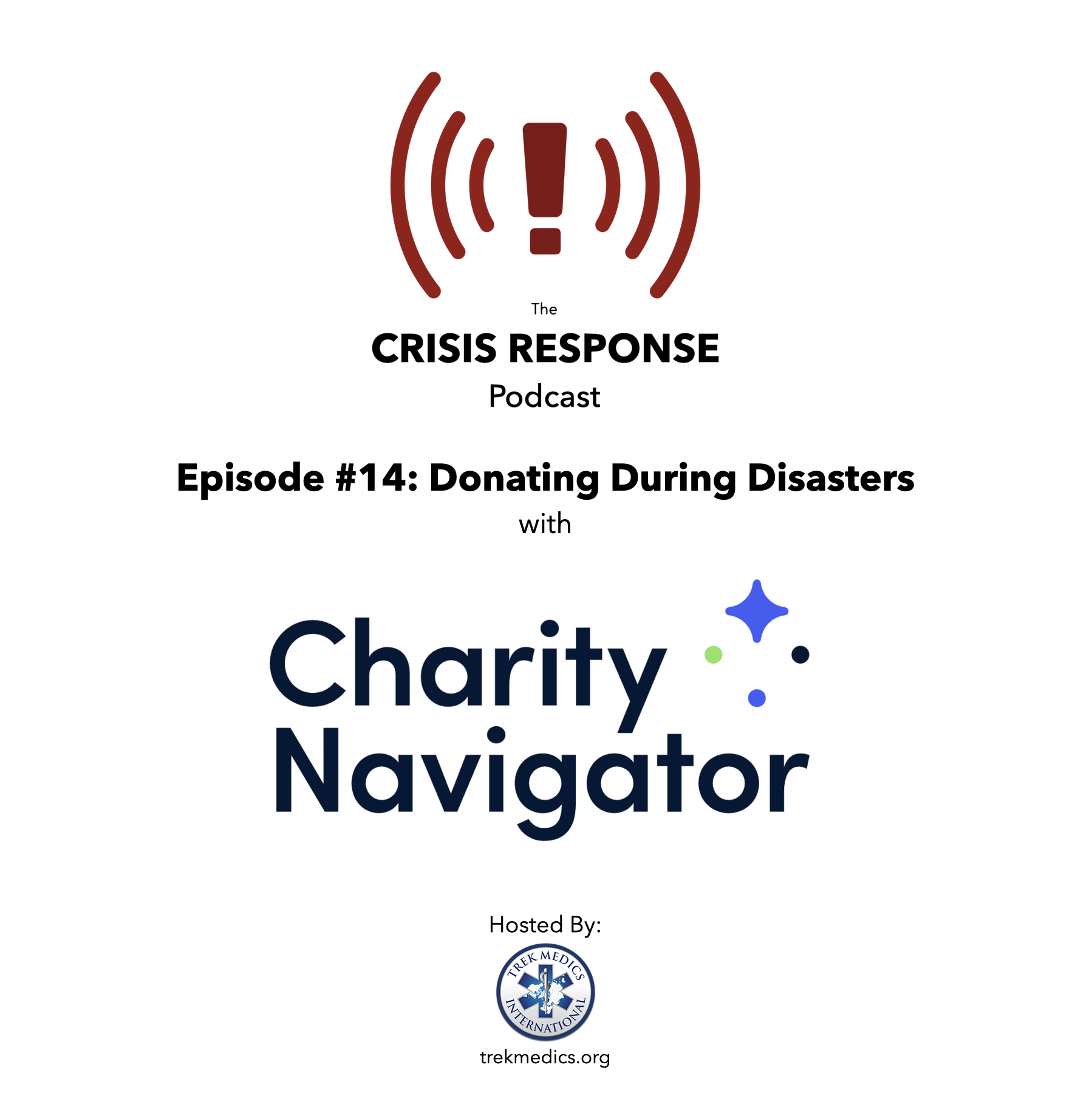This post has been adapted from an article originally published on EMSWorld.com
WHERE THE ROAD PAVED WITH GOOD INTENTIONS ENDS
There is a widespread belief that ambulance donations can solve the emergency transport problems of entire communities. But the truth is, they can’t. In fact, ambulance donations will probably cause you more problems than they will solve. And we know what we’re talking about because we’ve seen it in countless countries. We’ve seen it in so many countries, Trek Medics has made it a policy to never donate used ambulances.
To help manage expectations and avoid the inherent problems of importing new or used ambulances in communities that don’t have the money or roads they need to maintain these vehicles, we’ve compiled a short list of issues we’ve seen and heard time and time again.
DEFINE THE MISSION
Everyone knows what ambulances are meant to be used for – to transport the sick and injured – and the lights and sirens do a good job of ensuring the community’s aware of them. However, the lights and sirens can also be very distracting, and sometimes convince people that they represent an EMS system. This is not true. It’s important to make sure both recipients and donors agree what the intended purpose of the ambulance is, and if that purpose can be fulfilled with the recipient community’s full socio-economic status taken into consideration.
HONESTLY ASSESS LOCAL RESOURCES AND INFRASTRUCTURE
In all sincerity: Please don’t romanticize an ambulance simply because it’s an ambulance. Honestly evaluating the physical, financial and human resources in the community will prevent wasting resources and money on a vehicle that was not built for the local infrastructure. Several simple questions can help avoid unexpected obstacles:
- Are there paved roads everywhere? Are they smooth, maintained asphalt like those we have in North America? Or, are they unpaved, pockmarked, washboard or pure vegetation? This is an important question: North American and European ambulances are very fragile and breakdown easily if not used on paved roads
- What are the weather patterns? Most North American and European ambulances don’t do well in rain or snow.
- How wide are the roads? Big cities in many developing countries are giant webs of narrow, wandering alleys and one-lane streets – and inaccessible to North American ambulances
- How bad is the traffic? The more widespread the congestion, the more useless an over-sized ambulance—think, for example, of traffic in Calcutta or Port-au-Prince.
- How costly is fuel? North America traditionally enjoys very low fuel costs compared to most other countries, including those in Europe[1]
- How easy are spare parts to obtain within the country?
- How familiar are the local mechanics with these engines and electrical wiring?
For every different ambulance model a community acquires, there are recurring costs for fuel, spare parts, and specialized mechanics to maintain and repair the vehicle, which will be regular. This can become especially overwhelming when communities acquire multiple ambulances from multiple vendors and donors, leading to “a disparate fleet of vehicles of varying suitability, age and function.”[1] Unfortunately, many communities are so desperate to improve access to healthcare that they may unwittingly continue to spend money trying to make use of the ambulance until they have wasted too much.
Above all, high-quality patient care is the ultimate goal, and safety must be a starting point. We can all attest to how bumpy it is working on an old.
UNDERSTAND SHIPPING AND CUSTOMS
If you think those issues aren’t going to be a problem, there are many bureaucratic rules and regulations you will need to navigate to successfully ship an ambulance across borders. There are many ambulances currently parked in ports around the world that serve as the only air-conditioned office in the whole shipyard. The sheer number of forms and permits necessary to ship an ambulance can itself be enough of a hassle to discourage people from engaging the process, so form relationships with established and experienced shipping companies who can at least ensure the ambulance gets where it was intended to.
HEALTH SYSTEMS SAVE LIVES, AMBULANCES TRANSPORT PEOPLE
Understanding as much as possible about the recipient community’s health care system will never work against you; get to know the people whose lives could be impacted by this ambulance – and don’t always assume it’s going to “save” lives, just because it’s an ambulance. Someone who dies while waiting for an ambulance that’s never going to arrive may have survived if the ambulance was never in the community to begin with. As Ivan Ilyich wrote, “The siren of one ambulance can destroy Samaritan attitudes in an entire Chilean neighborhood.”
Hospital waiting rooms are always a good place to begin to learn about existing resources and how patients access emergency care (even if there is no ambulance). Respect these systems, and don’t assume the community leaders are going to cooperate with each other once the keys have been handed over. In many countries, divisions between public and private agencies and providers are often vague, and donating an ambulance to an agency which does not traditionally provide patient transportation has great potential to further fracture dysfunctional public health and safety systems.
UNINTENDED CONSEQUENCES
One last important consideration in any donation is to try to understand as thoroughly as possible beforehand the cultural impact an ambulance may have on a community. Ivan Illich, a Roman Catholic priest well known for his critique of Western medicine in Medical Nemesis, describes the “symbolic power” of an ambulance and the negative effect that lights and sirens can have on a community’s fragile health care system. Generally speaking, Illich was pointing to the unintended consequences of providing ambulances where they had not previously existed, and how professionalization of a service will inevitably deter communities and individuals from participating in their own healthcare.
This process of “medicalization” is especially troublesome when promises are made that can’t be kept, and when expectations are raised that can’t be met. For communities who are desperate to “modernize,” there can be any number of preconceived notions of what modernization means, and what it will provide to the community, things that well-meaning donors have no control over. While the hopes and expectations of a foreign culture are always difficult to determine at the outset, much of this information will come out during the careful process to answer all of the other questions discussed here, making it all the more important to move forward carefully, to remain completely transparent and not to make promises that can’t be kept. Simply put, one ambulance does not constitute an “EMS system,” and should not be treated as such.
It’s useful to remember that failed programs aren’t just worthless, they’re often of negative value. Unintended consequences are rarely cost-free. Countless failed programs have been based on the assumption that progress can be obtained by transplanting Western programs and concepts of health care into communities that haven’t previously participated in them. Just because it works in North America or Europe doesn’t mean it will work in an underdeveloped community.
LISTEN TO ALL IDEAS
Donating an ambulance to a struggling health care system can be a tremendous help, allowing health care professionals to provide services that weren’t previously available, or to reach patients that are difficult to access. However, it’s essential the donation is the result of a well thought out process that has considered a wide variety of problems and obstacles. It is also important to be willing to listen to ideas that weren’t previously being considered. After all, local health care professionals know their system’s needs far more intimately than we do. For that reason, if possible, the donor should refrain from putting restrictions on how the ambulance is used, so long as it is used ethically. At the same time, it is our responsibility to do proper vetting beforehand to avoid straddling communities with more financial burden than they already have.
A responsible donation should be open to alternative uses for ambulances outside of emergency response. Some examples include mobile clinics, long-distance patient transport, acting as part of a cold-chain, and inter-facility transport. But even with those solutions, it is important to ask if something less expensive could do the same job. In Zimbabwe, ox-drawn wagons used as ambulances have produced impressive results simply by making transportation available to women in labor, despite the assumption that ox-drawn wagons are a step backwards.
Because of the significant challenges that fragile health care systems in developing countries face, it should be all the more important to seek solutions that can address the situation in its entirety. The well-worn justification that “donating something is better than nothing” is disproved on a daily basis in the global health community. The next time you hear of someone looking to donate an ambulance, please help out by assuring the donation is a responsible one and not just a junk dump disguised in the cloak of humanitarianism. More often than not, we can do far more good if we scrap the ambulance and just send the cash.








